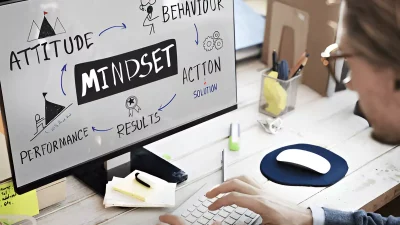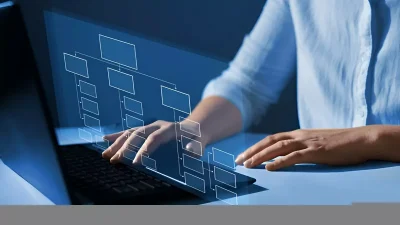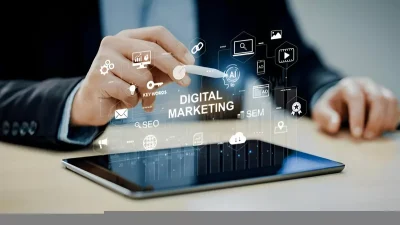The landscape of education has changed before our eyes. With technology becoming more and more part of the classroom and learning spaces, teachers have to do more than just master the content. It’s about thinking like the digitally literate teacher. But what does that mean? And how can teachers adapt their mindsets to thrive in the digital age?
This post takes a deep dive to explain what being a digitally literate educator is like, the primary mindsets you need to adopt in the face of technological change, and what steps you can take to ensure that you develop and maintain the attitude for successful teaching.
Digital Literate Educator: What It Really Means?
Simply, being a digitally literate educator is about more than just how to use tools like Zoom or Google Classroom. It’s about knowing the role technology plays in the learning process and being proficient in using it to help improve students’ experiences and results.
There are three things a digitally literate educator knows:
- Digital Literacy – How comfortable and skilled you are with teaching with digital tools, from creating engaging and interactive lessons, conducting online assessments, to teaching through a digital platform.
- Digital Ethics – Recognizing ethical considerations, including online safety, data privacy, and appropriate use of the Internet for teachers and students.
- Being Flexible – Being willing to embrace new tools, trends, and processes that contribute to a better learning experience for all parties.
This is not just in terms of technical dexterity, but also a state of mind. To a digitally literate educator, technology is an “enabler” rather than an obstacle.
Attitudes of a Digital Literate Teacher
The mindset educators need to develop for successful digital literacy teaching falls into the following categories:
A Growth Mindset
At its heart is the mindset of a digitally literate educator. That includes having faith in your ability to learn and get better. In a world where the digital landscape and accompanying tools and platforms are changing constantly educators need to see challenges as chances to grow.
For example:
- New to AI grading tools? Don’t shy away from them, experiment and explore how they can actually save you time and increase accuracy.
- Drowning in new learning management systems? Look for resources or training to learn them instead of quitting.
A growth mindset enables educators to tamp down the natural fear that comes with learning new technologies. It allows you to be open to innovation, experimentation, and continuous improvement.
Openness to Lifelong Learning
The tech world never sleeps. Every day, new tools, techniques, and platforms come on the market. It’s an advantage to get the upper hand.
Here’s how to stay sharp:
- Invest in Professional Development: Participate in workshops, webinars, or online classes on ed-tech.
- Stay Ahead of the Game: Monitor trendlines such as VR in the classroom or AI-driven lesson planning.
- Work with Others: Connect with educators through forums or groups in social media to share what you have learned and learn from others.
Continuous education ensures, at the very least, that you teach in line with the wants and the future of your students.
Student-Centered Approach
This shouldn’t be confused with just using technology for the sake of it. Students must always come first. And it’s vital to align digital tools with your students’ learning styles, needs and challenges.
For example:
- Incorporate game-based apps such as Kahoot or Quizizz for those interactive students.
- Supply some resources, such as YouTube tutorials, for students who learn visually.
- Use collaboration tools like Google Workspace to promote teamwork.
Approached with a student-oriented perspective, technology is a means to aid, rather than a panacea for diverse learners.
Flexibility and Adaptability
And the digital education field is constantly shifting. Whether it’s new software updates or shifts in classroom technology policies, adaptable teachers are the ones who survive.
Take the pandemic, the COVID-19 pandemic. ‘We flipped 180 degrees in a blink,’ said Eric Sheninger, a senior fellow at the International Center for Leadership in Education and a former school principal and superintendent who now speaks and consults with schools about digital learning.”
Source: “As Schools Look for Ways to Scare students and staff are looking for a critique), Pushback Over Cybersecurity Training” by SARA MORRIS, TOBIAS LUTKE and LEE LOZANO
In the days that followed, schools were forced to launch online teaching overnight. For some teachers who were able to adapt quickly and use digital tools effectively, the transition went more seamlessly.
The following are actionable tips for building greater adaptability:
- Plan B (If the learning management system goes down, have pre-prepared offline activities).
- Try a new tool every once in a while to keep up with changes.
- Stay calm when things go south and learn from it.
The key to effective teaching in the digital world is to learn to work in response to unexpected events.
Collaboration and Development of Community
No longer is teaching a solitary pursuit. Now, collaboration between educators, students, and tech experts is crucial.
To be a digitally literate teacher is more than plugging into a technology. To me, it means people:
- Work with teammates to share best practices for implementing ed-tech tools.
- Create a student community in which collaboration, collective learning,g and respectful interactions abound.
- Work with tech experts or ed-tech purveyors to embed the latest tools.
Members get what they give: connecting with peers, contributing their knowledge, and having their careers upgraded.
The Stewardship of Digital Responsibilities and Ethics
All digital educators should be thinking about the ethical considerations of the tools and platforms that they use. This involves nurturing digital accountability.
Here are the fundamental components of digital responsibility for teachers:
- Teach internet safety: Promote the use of the internet safely, how to avoid scams, and how to say something if they see cyberbullying.
- Safeguarding privacy: Make sure sensitive student data is secure on digital platforms.
- Finding Reliable Information: Teachers should show their students how to find credible sources and avoid misinformation.
This attitude towards technology allows the responsible use of technology and the development of digital ethics in students.
Developing the Right Mindset as a Digital Literate Educator
The correct attitude is not something inherent to you; it is something that you can create and develop. Here are some concrete ways to do so:
- Developing Your Knowledge Learn: Sign up for ed-tech and digital literacy programs, or attend workshops.
- Be Daring and Experiment: Try experimenting with new tools or platforms with your students.
- Solicit Feedback: Consistently request feedback from students and colleagues about how technology is influencing your teaching.
- Participate in Educator Networks: Collaborate with a team of educators who guide each other and share curricula, resources, and inspiration.
- Reflect: Look back and consider what worked, and what didn’t. Adapt your frame and tact to the occasion.
Why a Digitally Literate Educator Frame of Mind Is More Important Now Than Ever
With the resounding transition from traditional to hybrid and digital learning climates, what time is better than now to shape ourselves with the mindset of a digitally literate educator? As teachers who have the right attitudes, not only nail technology but also motivate their students to navigate their way through this increasingly tech-dependent world.
And watch out—the way of thinking I’m about to teach you takes time to develop. The rewards are great, however, for both you and your students.
Are you ready to take your teaching to the next level in the digital era? Get started by exploring free digital literacy resources or joining networks of educators.



